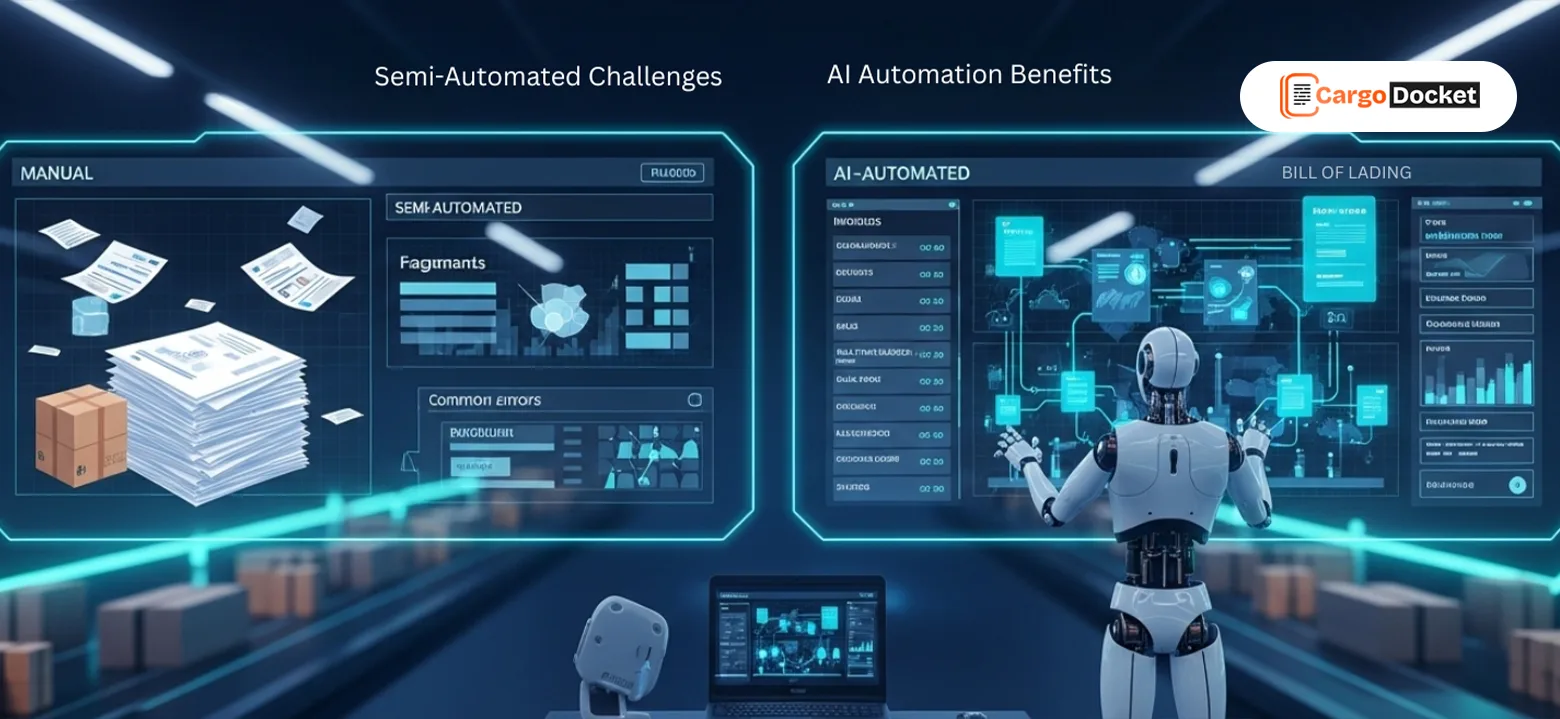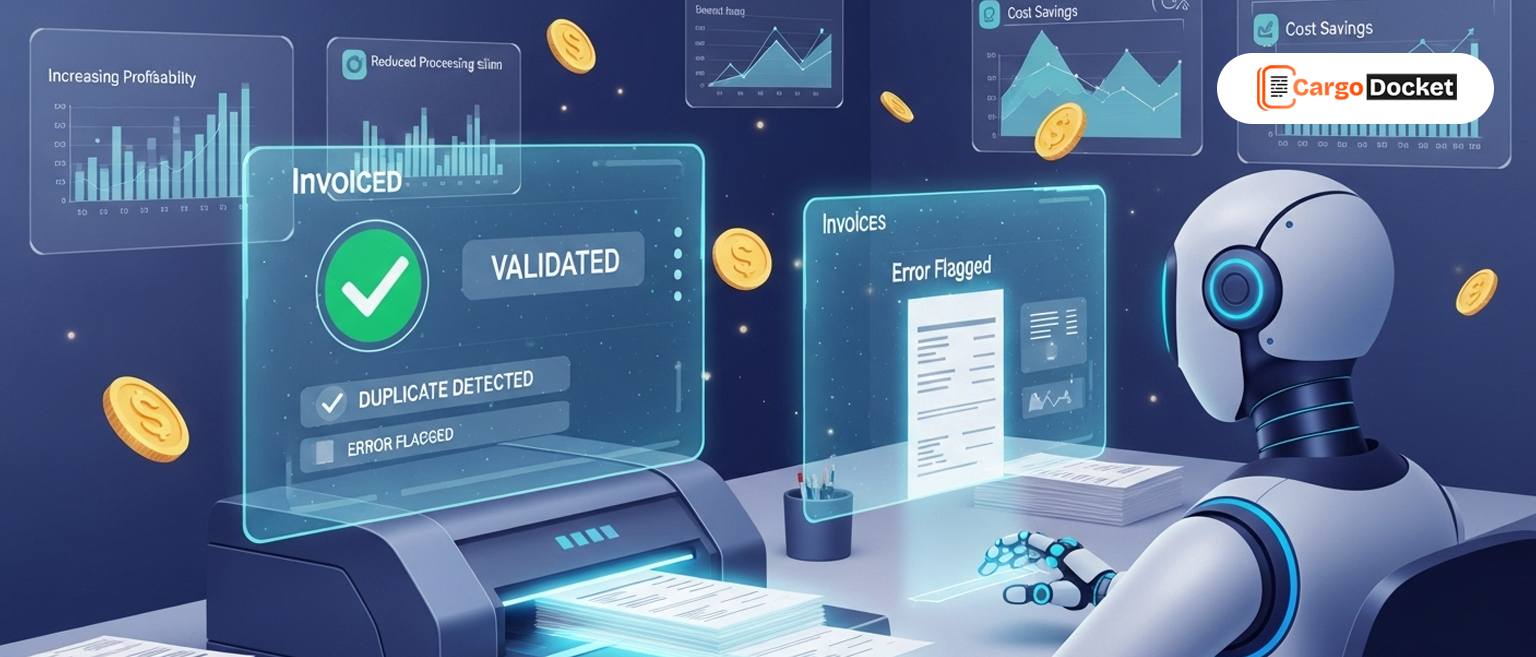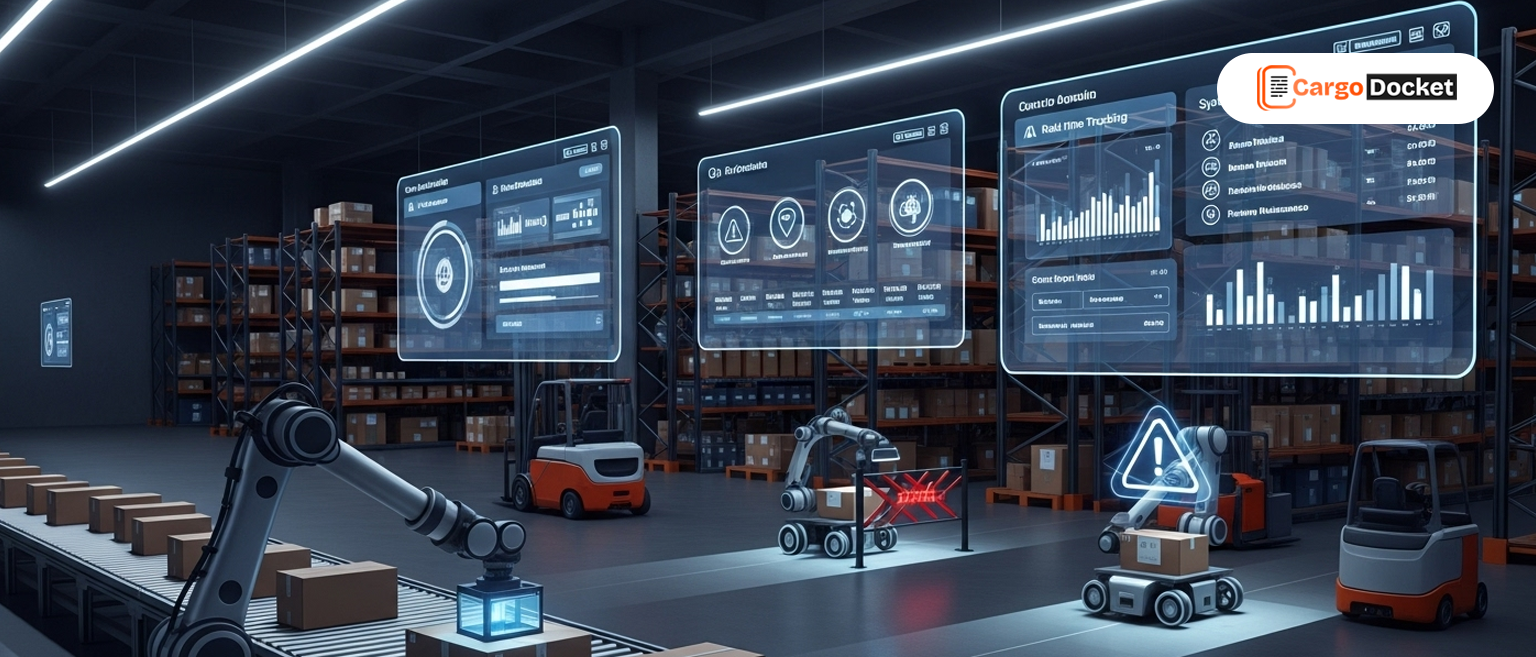When it comes to freight documentation and invoice processing, there’s a silent time-thief lurking in every logistics operation: manual data handling. Teams spend hours each day uploading files, validating entries, matching invoices, and fixing the very tools that were supposed to help. If you’re using CargoWise and still relying on manual or half-baked OCR solutions, it’s time for a real upgrade.
Let’s explore how moving from traditional documentation to true AI-powered document automation transforms not only your accuracy but your entire logistics workflow.

What Makes Manual Freight Documentation So Inefficient?
In a traditional setup, manual freight documentation flows through multiple people, operations staff, finance teams, and data entry clerks before it ever reaches your TMS or ERPs like CargoWise.
Here’s how that looks step by step:
- Documents (PDFs, scans, emails) are collected manually
- Data is entered into the TMS/ERP by hand for shipment creation
- More manual edits are made for any shipment or consolidation amendments
- Then comes accounts payable, invoice entry, validation, and auditing
- Each step relies on human input and oversight
According to recent studies, this results in 42.5% of your team’s time being consumed by repetitive manual work, introducing fatigue, delays, and human errors. Accuracy in this model is unreliable, and scalability is nearly impossible without hiring more people.
Can Basic OCR or “AI” Tools Really Help?
To cut down the load, many companies have turned to OCR or “AI-enabled” software tools that offer basic automation, extracting data from documents and pushing it into the TMS/ERP. Sounds great in theory. But in practice?
- Software may extract basic data, but the process still requires human oversight
- Shipment creation and invoice posting still involve people reviewing and fixing errors
- Each TMS/ERP handoff (e.g., during shipment amendments or AP processing) introduces more work
- Teams spend time not just validating data, but fixing the AI when it doesn’t interpret something correctly
This approach results in 20–80% accuracy, and teams end up spending 35% of their time troubleshooting or fixing the system instead of focusing on meaningful work.
And we come to know that partial automation still wastes time and introduces risk. It looks like tech on the surface, but behaves like a manual process behind the scenes.
What Changes with Fully AI-Powered Automation?
Now, let’s compare that to what happens with a fully intelligent automation solution, like what CargoDocket offers through advanced AI document automation integrated with CargoWise.
Here’s the shift:
- All document types (invoices, B/Ls, packing lists, etc.) are uploaded automatically
- AI extracts, classifies, and matches data to the right shipment or job reference
- Shipment creation, amendments, and AP invoice posting happen without human input
- Only exceptions (e.g., mismatches or data gaps) are flagged for human review
This streamlined flow delivers 99.97% accuracy, and teams spend only 8% of their time reviewing exceptions, no repetitive entry, no fixing AI errors, and no micromanaging bots.
The outcome? Fewer hands in the process. Fewer errors. A faster, cleaner, more scalable operation.
How Does This Translate into Real Business Impact?
The difference between these three approaches isn’t just about technology; it’s about time, money, and margin.
Let’s break it down:
Manual Process
- High labor cost
- Inconsistent accuracy
- Slow cycle time
- Little scalability
Basic OCR/AI
- Some time saved
- But adds tech management overhead
- Still needs humans for most steps
- Limited value at scale
Full AI Automation
- Reliable accuracy (~99.97%)
- Minimal human effort
- Faster turnaround (from days to hours)
- Clear audit trail and compliance
- Free up teams for strategic work (vendor management, analytics, forecasting)
This is no longer just about digitizing freight documents. It’s about transforming how your back office works and wins.
Why Do CargoWise Users Struggle Without Automation?
CargoWise is an incredibly powerful ERP, but it wasn’t designed to handle unstructured documents like PDFs or emails without manual input. That’s where most CargoWise users hit a wall. You have the system to manage jobs, shipments, invoices, customs, and more, but if your documents aren’t digitized and validated automatically, you’re still stuck doing the heavy lifting.
Most of the errors, delays, and audit failures in CargoWise environments trace back to how documents are handled, not how the software functions.
That’s why CargoDocket AI was built to plug directly into the CargoWise workflow. It turns disconnected documents into clean, compliant data that flows through CargoWise the way it was always meant to.
What’s the Best Way to Implement This?
Getting started doesn’t require reworking your entire tech stack. Here’s a quick roadmap:
Start with a high-volume pain point
Most companies begin with freight invoice automation, since it creates the biggest time drain.
Upload sample documents
Allow the AI to learn from your shipment or invoicing formats. It picks up on your job references, vendors, and organizational structure.
Define your tolerance rules
Set limits for what can be posted automatically and what gets flagged.
Test and monitor exceptions
Review edge cases and improve the model accuracy based on real feedback.
Scale across document types
Once proven, expand to customs docs, packing lists, PODs, and statements of account.
Conclusion
If your team is spending more than 2 hours a day entering, uploading, or checking documents in CargoWise, that’s not efficiency, it’s friction. AI document automation flips the model. Instead of chasing paperwork, your system works in the background while your team focuses on solving real problems.
Want to experience 99.97% accuracy and slash your manual effort by 80%?
Let Cargo Docket AI show you what true logistics automation looks like. Book your demo today, and leave manual entry behind for good.



